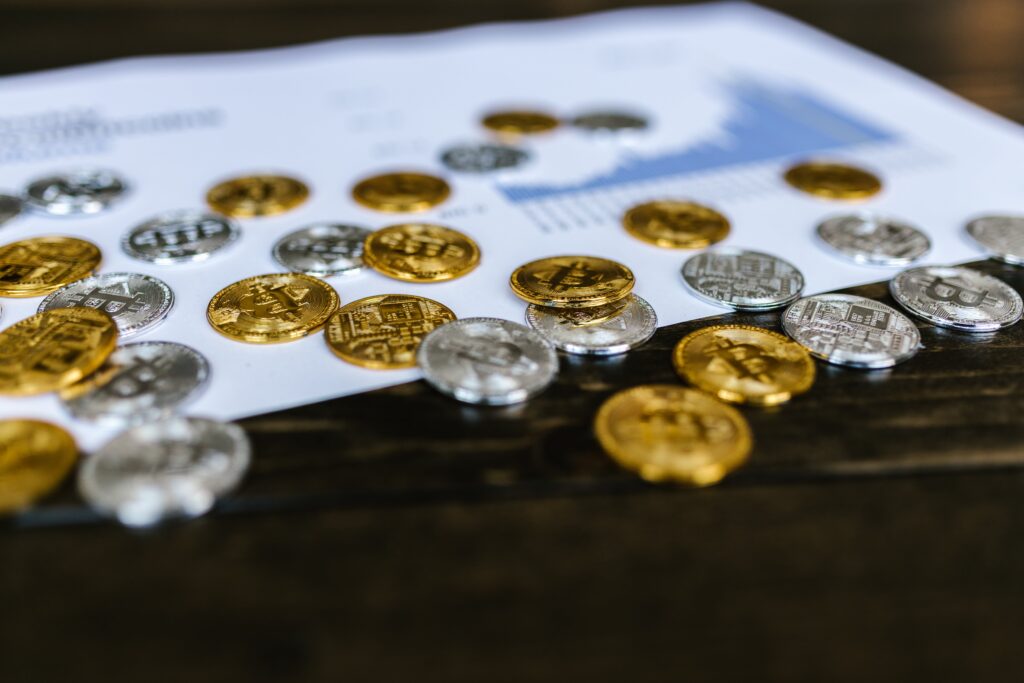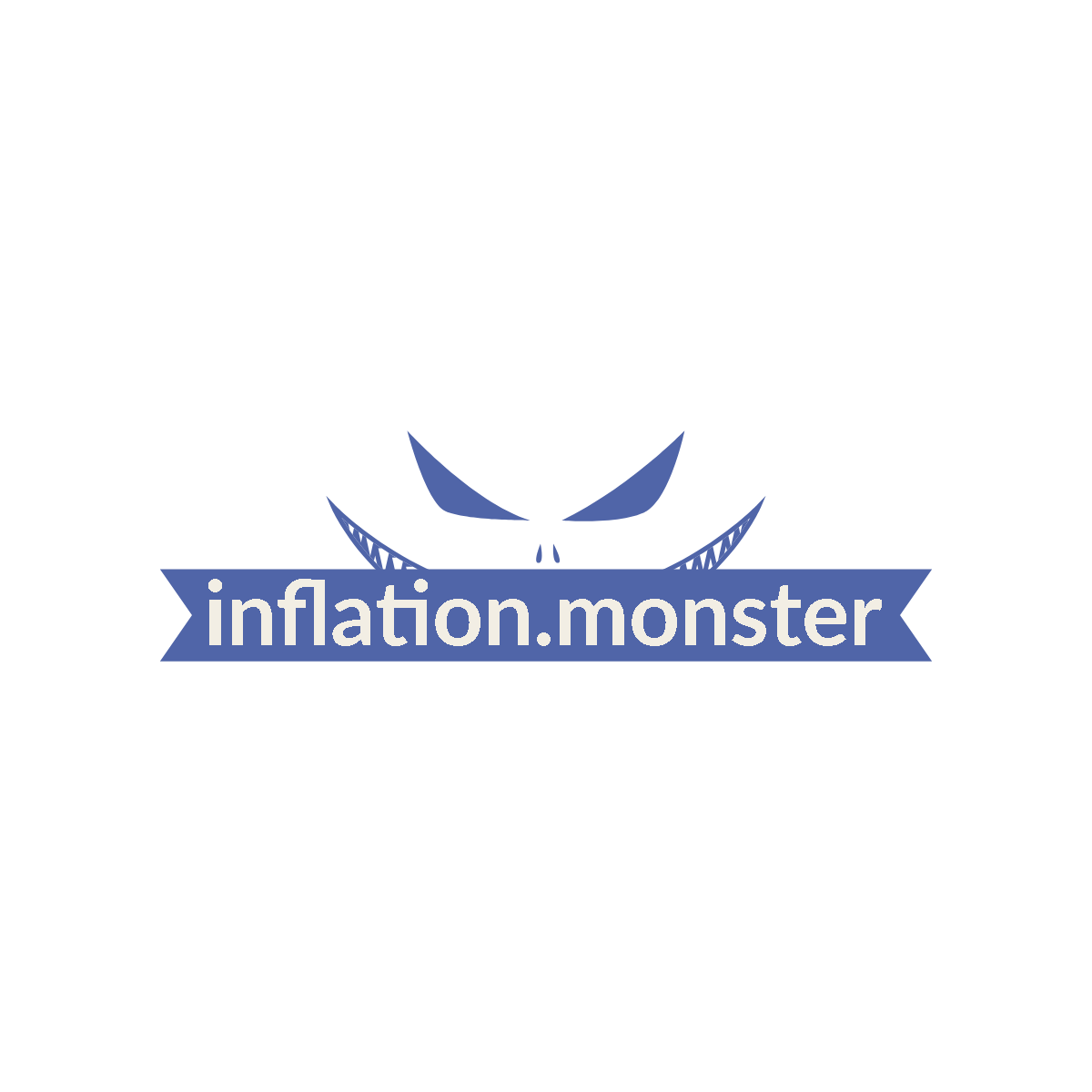We all know that savings habits play a crucial role in our financial well-being, but have you ever considered how inflation affects those habits? Inflation, often referred to as the “inflation monster,” has a profound impact on the value of money and the psychology behind our saving behaviors. At Inflation.Monster, we are here to unravel the intricacies of inflation and its connection to our savings, equipping you with the knowledge to make informed financial decisions in the face of this looming monster. So join us as we dive into the fascinating world of inflation and the psychology of savings habits.

Understanding Inflation
Inflation is a fundamental concept in economics that refers to the sustained increase in the general price level of goods and services over a period of time. It essentially erodes the purchasing power of money. As prices rise, each unit of currency can buy fewer goods and services. This decrease in purchasing power is one of the primary effects of inflation. Understanding inflation is crucial for individuals and societies alike, as it has a significant impact on various aspects of the economy.
Defining inflation
Inflation can be defined as the rate at which the general level of prices for goods and services is increasing, and consequently, the purchasing power of currency is decreasing. It is typically measured using an inflation index, which tracks the average price changes of a basket of goods and services over time. One commonly used inflation index is the Consumer Price Index (CPI), which reflects changes in the prices of a representative set of goods and services purchased by households.
Causes of inflation
Inflation can have multiple causes, including both demand-side and supply-side factors. Demand-pull inflation occurs when aggregate demand in an economy exceeds the available supply of goods and services. This can be caused by factors such as increased consumer spending, excessive government spending, or expansionary monetary policies that stimulate borrowing and investment. On the other hand, cost-push inflation occurs when production costs increase, leading producers to raise prices to maintain their profit margins. Factors such as rising wages, higher raw material costs, or supply chain disruptions can contribute to cost-push inflation.
Types of inflation
There are different types of inflation based on the underlying causes and their severity. Mild inflation, also known as creeping inflation, refers to a gradual increase in prices over time. This type of inflation is often considered healthy for an economy as it indicates steady economic growth. Moderate inflation refers to a slightly higher rate of price increase, usually between 3-10% per year. Hyperinflation, on the other hand, is an extreme form of inflation characterized by rapidly increasing prices, often to the point of rendering the country’s currency worthless. Hyperinflation typically occurs during periods of economic and political instability.
The Impact of Inflation on Savings
Inflation has a significant impact on savings, particularly in terms of reducing purchasing power and eroding savings over time. Understanding how inflation affects savings is crucial for individuals planning for their financial future.
Reducing purchasing power
One of the primary effects of inflation on savings is the reduction in purchasing power. As the general price level rises, the same amount of money can buy fewer goods and services. This means that over time, the value of savings decreases. For example, if the inflation rate is 2% per year, the purchasing power of $100 today would only be equivalent to $98 in the next year. This erosion of purchasing power can have a significant impact on individuals’ ability to meet their future financial needs.
Erosion of savings over time
Inflation also erodes the value of savings over time. Suppose an individual saves a certain amount of money in a bank account or invests it in low-yielding assets such as fixed deposits. If the rate of inflation is higher than the interest rate earned on these savings, the purchasing power of the savings will decline. This decline is a result of the fact that the returns on savings may not keep pace with the rising prices of goods and services. As a result, individuals may find it increasingly difficult to maintain their standard of living or achieve their long-term financial goals.
Psychological Factors Influencing Savings Habits
Savings habits are influenced by various psychological factors that can either facilitate or hinder individuals’ ability to save for the future. Understanding these factors is essential for individuals and policymakers seeking to promote a culture of saving.
Loss aversion
Loss aversion refers to the psychological tendency for individuals to experience the pain of a loss more intensely than the pleasure of an equivalent gain. In the context of savings, loss aversion can manifest as individuals being more reluctant to save money due to the perceived loss of immediate enjoyment. This tendency can make it challenging to prioritize long-term saving goals over short-term desires.
Present bias
Present bias is the propensity to prioritize immediate gratification over long-term rewards. Individuals with present bias tend to value immediate consumption more than future savings. This bias can lead to inadequate savings for future needs, as individuals prioritize current enjoyment over future financial security. Overcoming present bias requires individuals to consciously plan and allocate resources for long-term goals, despite the allure of immediate gratification.
Delayed gratification
Delayed gratification is the ability to forgo immediate rewards in favor of larger, long-term benefits. Individuals who possess this trait are more likely to prioritize savings and invest in the future. The ability to delay gratification requires self-control and discipline but can lead to greater financial security and achievement of long-term goals. Encouraging individuals to develop this trait can play a significant role in promoting healthy savings habits.
The Relationship Between Inflation and Savings Habits
Inflation has a complex relationship with savings habits. While inflation erodes the value of savings over time, it can also have a positive impact on savings behavior under certain circumstances.
Effects of inflation on savings habits
Inflation can incentivize individuals to save more in an effort to preserve their purchasing power. When people anticipate rising prices, they may be more motivated to save money for future expenses. This can lead to an increase in savings rates and a greater awareness of the importance of long-term financial planning. However, inflation can also create a sense of urgency to spend money before its value declines further, which can lead to reduced savings.
Inflation’s influence on retirement planning
Inflation has a significant impact on retirement planning, as it directly affects the purchasing power of savings during retirement. Individuals planning for retirement need to consider the potential impact of inflation on their income and expenses. Since retirement may last for several decades, it is crucial to factor in the expected inflation rate when determining the required savings amount. Failure to account for inflation can result in a significant shortfall in funds during retirement, leading to a decreased standard of living.

Strategies for Fighting Inflation’s Effect on Savings
There are several strategies individuals can employ to mitigate the impact of inflation on their savings and preserve their purchasing power.
Investing in assets with higher returns
One strategy is to invest in assets that have historically provided higher returns than the inflation rate. By investing in assets such as stocks, real estate, or mutual funds, individuals have the potential to earn returns that outpace inflation. These higher returns can help offset the erosion of purchasing power caused by inflation over time. However, it is essential to consider the associated risks and diversify investments to manage the potential volatility of these assets.
Diversification as a hedge against inflation
Diversification is a risk management strategy that involves spreading investments across different asset classes, sectors, or geographical regions. By diversifying their investment portfolio, individuals can reduce the impact of inflation on their overall savings. Different asset classes, such as stocks, bonds, and commodities, may respond differently to inflationary pressures. Therefore, holding a diversified portfolio can provide some level of protection against inflation-induced losses.
Utilizing inflation-protected securities
Inflation-protected securities, such as Treasury Inflation-Protected Securities (TIPS), are specifically designed to safeguard against the erosion effect of inflation on investments. These securities adjust their value based on changes in inflation, ensuring that the purchasing power of the invested capital remains relatively stable over time. By allocating a portion of their savings to inflation-protected securities, individuals can protect their purchasing power and mitigate the impact of inflation on their overall portfolio.
Behavioral Economics and Savings Behavior
Behavioral economics offers valuable insights into individuals’ savings behavior and can guide policymakers’ efforts to promote responsible financial habits.
Nudging savers towards better habits
Nudging is a concept in behavioral economics that involves designing the choice architecture to encourage individuals to make better decisions. In the context of savings, policymakers can implement nudges such as automatic enrollment in retirement plans, default savings contributions, or personalized savings targets. These nudges can help overcome behavioral biases and encourage individuals to save more effectively for their future.
The role of financial education
Financial education plays a crucial role in shaping individuals’ savings habits. By enhancing people’s knowledge and understanding of personal finance topics such as inflation, budgeting, and long-term planning, financial education can empower individuals to make informed financial decisions. Providing accessible and practical financial education programs can equip individuals with the necessary tools to navigate the complexities of inflation and its impact on savings.
Incorporating technology to promote savings
The advent of technology has provided new opportunities to promote savings habits. Mobile apps, online budgeting tools, and robo-advisors can support individuals in tracking their expenses, setting savings goals, and automating savings contributions. These technological tools make it easier for individuals to develop and maintain healthy savings habits, regardless of their financial literacy levels.

Government Policies and Inflation
Government policies, both monetary and fiscal, play a significant role in managing inflation and its impact on the economy and savings.
Monetary policies and their impact on inflation
Monetary policies are implemented by central banks to manage the money supply, interest rates, and credit availability in the economy. Central banks use tools such as interest rate adjustments and open market operations to control inflation. By raising interest rates, central banks can reduce borrowing and spending, thus curbing inflationary pressures. Conversely, lowering interest rates can stimulate borrowing and investment, stimulating economic growth but potentially fueling inflation.
Fiscal policies and their effects on inflation
Fiscal policies involve government decisions regarding taxation, spending, and borrowing. Expansionary fiscal policies, such as increasing government spending or reducing taxes, can stimulate economic activity and potentially lead to increased inflationary pressures. Conversely, contractionary fiscal policies, involving spending cuts or tax hikes, aim to reduce inflationary pressures by curbing aggregate demand. Government policies must strike a balance between stimulating economic growth and managing inflation to ensure stability and promote sound savings habits.
Cultural and Socioeconomic Factors Affecting Savings Habits
Savings habits are influenced by cultural and socioeconomic factors that can vary across different societies and income levels.
Culture’s influence on savings behavior
Culture plays a significant role in shaping individuals’ savings behavior. In societies that prioritize savings and have a strong culture of thrift, individuals are more likely to save a significant portion of their income. Cultural norms regarding consumption, debt, and saving can significantly impact individuals’ financial decisions and long-term savings habits. Understanding cultural influences can help policymakers tailor financial education initiatives and savings incentives to specific cultural contexts.
Income level and savings patterns
Savings patterns are closely linked to income levels. Higher-income individuals generally have greater capacity to save due to disposable income. However, income is not the only determinant of savings behavior. Societies with higher income levels may also exhibit higher levels of consumption, leading to lower savings rates. Conversely, individuals with lower incomes may be more motivated to save a larger portion of their earnings to achieve financial security. Promoting savings among individuals across income levels requires policies that address both income disparities and the cultural factors that influence saving behaviors.
Inflation and Generational Differences in Savings Habits
Different generations exhibit varying savings habits, influenced by their unique experiences and attitudes towards inflation.
Baby boomers and inflation
Baby boomers, born between 1946 and 1964, have experienced different inflationary periods throughout their lives. Many baby boomers lived through high inflation rates during the 1970s and early 1980s, which shaped their savings habits. This generation tends to prioritize savings and is often more risk-averse when it comes to investments, seeking stable assets that can preserve their purchasing power. As they approach retirement, baby boomers must carefully consider inflation’s impact and factor it into their retirement planning.
Millennials and inflation
Millennials, born between 1981 and 1996, have entered the workforce during a period of relatively low inflation. This generation has grown up in an era of technological advancements and globalization, which has influenced their savings habits. Millennials often face financial challenges such as student loan debt and rising housing costs, making saving for the future more difficult. While inflation may not be at the forefront of their financial concerns, it is essential for millennials to understand its potential impact on their long-term financial goals and take appropriate measures to preserve their purchasing power.
Case Studies: Countries Dealing with Inflation and Savings Habits
Examining case studies of countries that have dealt with inflation and its impact on savings can provide insights into the consequences and potential strategies for individuals to navigate such situations.
Venezuela’s hyperinflation crisis
Venezuela has been grappling with hyperinflation, with inflation rates reaching astronomical levels. This crisis has had a devastating impact on the country’s savings habits, as the value of the national currency has become virtually worthless. Venezuelans have had to resort to alternative forms of currency, such as cryptocurrencies, to protect their savings from the eroding effects of hyperinflation. This case study highlights the importance of sound economic policies and proactive measures to prevent and mitigate the devastating effects of hyperinflation on savings.
Germany’s Weimar Republic inflation
The hyperinflation experienced by Germany’s Weimar Republic in the early 1920s is another notable case study. The rapid devaluation of the German mark during this period undermined individuals’ savings and led to the collapse of the German economy. People saw their savings become virtually worthless, and the social and economic consequences were severe. Germany’s experience underscores the need for prudent monetary policies and effective measures to stabilize prices and prevent hyperinflation.
Zimbabwe’s hyperinflation
Zimbabwe experienced a period of hyperinflation during the late 2000s, with prices doubling every few hours at its peak. This hyperinflation eroded individuals’ savings, leaving them financially devastated. The case of Zimbabwe demonstrates the importance of sound economic governance, including effective monetary and fiscal policies, to prevent hyperinflation and protect the purchasing power of savings. It also highlights the challenges faced by individuals in preserving their savings during periods of extreme inflation.
In conclusion, understanding inflation and its impact on savings habits is crucial for individuals and policymakers. Inflation erodes the value of savings over time, reducing individuals’ purchasing power and potentially jeopardizing their long-term financial security. Psychological factors such as loss aversion, present bias, and delayed gratification influence individuals’ savings habits and must be addressed to promote responsible saving behavior. Strategies such as investing in assets with higher returns, diversifying investments, and utilizing inflation-protected securities can help mitigate the impact of inflation on savings. Government policies, cultural factors, and generational differences also play a significant role in shaping savings habits. By understanding these factors and incorporating behavioral economics principles, policymakers can design effective measures to promote a culture of saving and mitigate the adverse effects of inflation on individuals’ financial well-being.




